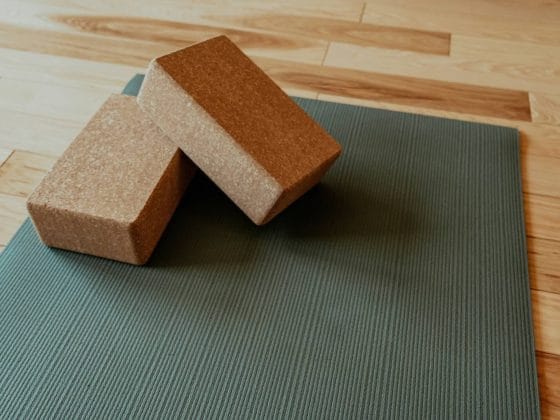As yoga has exploded in popularity, so too has the number of teachers. And, if you’re looking to become a certified yoga teacher, it’s a good thing to understand the titles used in the yoga world.
- Can you tell your CYT from RYT?
- Are you an E-RYT?
- Do you need to be approved from a RYS?
We’re not sure anyone in the yoga community would be so cruel as to speak so cryptically as this in a real conversation. Nonetheless, all of these titles are useful to know for anyone serious about becoming a certified instructor and for ensuring their voice is listened in the wider conversation on all things.
The following is a guide on those titles, what experience and education they denote, and a means for you to pick up some all-too-necessary lingo.
What is a CYT and a RYT?
There are several different certifications one can attain when teaching yoga. Two such titles are the Certified Yoga Teacher (CYT) and the Registered Yoga Teacher (RYT). The distinction between the two is important to know when deciding which type of training you would like to pursue.
RYT (Registered Yoga Teacher)
The Registered Yoga Teacher (RYT) title is the most widely recognized by the yoga community. This certification is issued by Yoga Alliance, an organization that sets standards for yoga teachers around the world. For aspiring yoga teachers, becoming an RYT can open up opportunities and career paths, although it is not always needed. Do you know the differences between RYT 200, RYT 300 & RYT 500?
There are there different types of RYT.
RYT 200, RYT 300, RYT 500

Registered Yoga Teacher RYT 200 is your normal 200hour qualification usually done over the course of 4 weeks
Registered Yoga Teacher RYT 300 is a 300hour advanced qualification usually done over the course of 6 weeks that began being offered just in 2019. Before then you needed to first have a RYT 200 in order to do the 300 level.
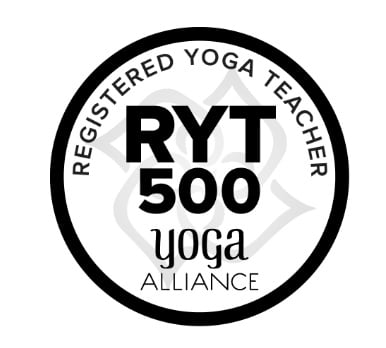
Registered Yoga Teacher RYT 500 is an advanced 500hour qualification that is completed usually over 10 weeks.
CYT (Certified Yoga Teacher)
A CYT is a certification put forward by World Yoga Alliance, wyayoga.org an international community, similar to Yoga Alliance, yogaalliance.org (who uses RYT), yet the org not as popular or as well known.
To become a CYT an individual must complete an approved yoga teacher training program of at least two hundred hours. The requirements for a CYT certification include being certified by a CYS (Certified Yoga School) and taught by a CYT (Certified Yoga Teacher) in a yoga teacher training course that is at least 200 contact hours.
A CYT certification along with the RYT certification are not mandatory courses or certificates. They are independent third party organizations that yoga schools can register under.
What is the difference between a RYT and a CYT?
There is not a lot of difference between an RYT and a CYT. The CYT certificate is certified by World Yoga Alliance, whereas the RYT is certified by Yoga Alliance. Both organizations carry no official recognition as there is no true Yoga authority (as it should be). While there are some benefits by being certified by these organizations (which will be talked about later) it is not 100% neccesary.
Continuing Education (CE)
Continuing Education (CE) is a requirement by Yoga Alliance that you must fulfil in order to keep your Yoga Alliance credentials. This gives teachers the opportunity to keep their teaching skills fresh, as well as stay abreast of any changes in the industry.
CE also helps teachers maintain their titles and credentials. It keeps teachers from being stagnant in their practice, encouraging them to continuously learn and evolve as practitioners and guides.
In order to maintain The Yoga Alliance registration:
RYTs and E-RYTs must complete 75 hours of CE within three years from the date of their initial registration. This total number of hours must include:
- 45 hours teaching yoga; and
- 30 hours of yoga training that is directly related to one of our Educational Categories
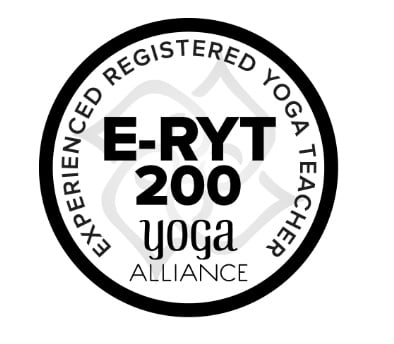
Experienced Registered Yoga Teacher (E-RYT 200)
Experienced Registered Yoga Teacher (E-RYT 200) takes a minimum requisite of 1,000 hours of teaching experience to attain this certification since their 200 hours of teacher training, and has also taught for at least two years post-training.
This level indicates that a practitioner not only has an extensive knowledge base but also a proven track record for teaching others successfully. In addition to being recognized by Yoga Alliance, having earned this title demonstrates that the teacher is an experienced leader in their field and are often respected members within their local communities as a result.
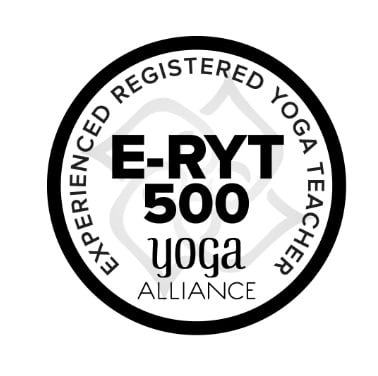
Experienced Registered Yoga Teacher (E-RYT 500)
This credential is the highest level of certification a yoga instructor can achieve. A yoga teacher must have completed at least 500 hours of teaching experience and accumulated at least 1000 hours of additional practise, study and training in the field. Likewise, they have to have taught for at least four years post-teacher training.
It is a coveted designation that requires the utmost dedication and hard work to achieve. It is not just only about ticking off a certain requirement of hours, but demonstrating advanced knowledge and expertise around principles such as anatomy, alignment, sequencing, philosophy, and spiritual practises – and being able to effectively communicate these principles to students in their classroom.
Generally, these instructors are renowned at being at the top of their game, the leading authorities and teachers within the industry, are often seen leading workshops and retreats across the globe. They also often serve as mentors to other teachers who are striving to reach similar levels of achievement in their own practice.
Registered Yoga School (RYS)
RYS, or a Registered Yoga School, is a school affiliated with and approved by the Yoga Alliance. They must meet standards of safety, ethical practice, and professionalism as well as having their curriculum vetted by the YA to ensure it meets the educational requirements.
It’s a means to assure only the highest levels of quality and competency. A student attending an RYS can be confident that they will be taught by qualified instructors and adequately trained practitioners, and will receive comprehensive instruction on all aspects of yoga practice, from anatomy and physiology to philosophy and meditation.

Registered Children’s Yoga Teacher (RCYT)
Requirements for a Registered Children’s Yoga Teacher (RCYT) include completing a 200-hour teacher training with a RYS 200 as well as Completing a 95-hour teacher training with a Registered Children’s Yoga School (RCYS) as well as 30 hours of teaching experience since completing the course.
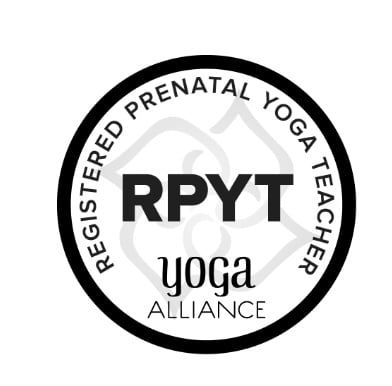
Registered Prenatal Yoga Teacher (RPYT)
Requirements for a Registered Prenatal Yoga Teacher (RPYT) include Completing a 200-hour teacher training with a RYS 200 and completed a 85-hour teacher training with a Registered Prenatal Yoga School (RPYS) as well as having 30 hours of teaching experience in prenatal yoga.
Teacher Training Course (TTC)
Many yoga teachers start their journey with a Teacher Training Course. A TTC is a comprehensive course that is usually 200 hours (to begin with) and takes usually 1-6 months to complete and provides students with all the skills and knowledge necessary to become a certified yoga teacher. There are also 50 hours courses as well as 100, 200, 300, and 500-hour courses.
It’s really the springboard for most aspiring teachers, where they can gain confidence as a teacher, nurse and appreciate their own style, be introduced to a network of peers and come to understand how they can situate themselves within the wider yoga community.
Is It Possible To Become A Yoga Teacher Without Attending A Teacher Training Course?
There’s no harm in asking this question, and of course it’s always possible. However, the most pertinent question is: does it make much sense for the determined aspirant at the start of their yoga journey to not take a course?
Honestly, probably not.
Being certified is more than just a slip of paper that helps one get their foot in the door. It’s a way of proving your chops to the wider community, of assuring teachers and students alike that you have the experience, knowledge and wherewithal behind you that grants you credibility.
Not going for a teaching course means that you’ll have to teach yourself. It’s by no means an impossibility, but it’s by far a more effective use of one’s time and efforts to be taught by a qualified body. Not to mention that having a certificate puts you in the running. Not holding one takes you out of it.
The fact is that without a certificate, there’s no assurance that a self-taught yoga teacher has taught themselves to a high-quality and error-free standard. Becoming a certified yoga teacher is worth every penny and every hour invested. It tells prospective students that you have passed through all the necessary loops and hurdles necessary to teach the art of yoga in a healthy and proper manner – and it opens up more doors and avenues for you to grow and advance as a practitioner.
Teaching yoga is an incredibly rewarding career, and with the right qualifications and training, one can become a teacher and share the gift of yoga anywhere in the world!

